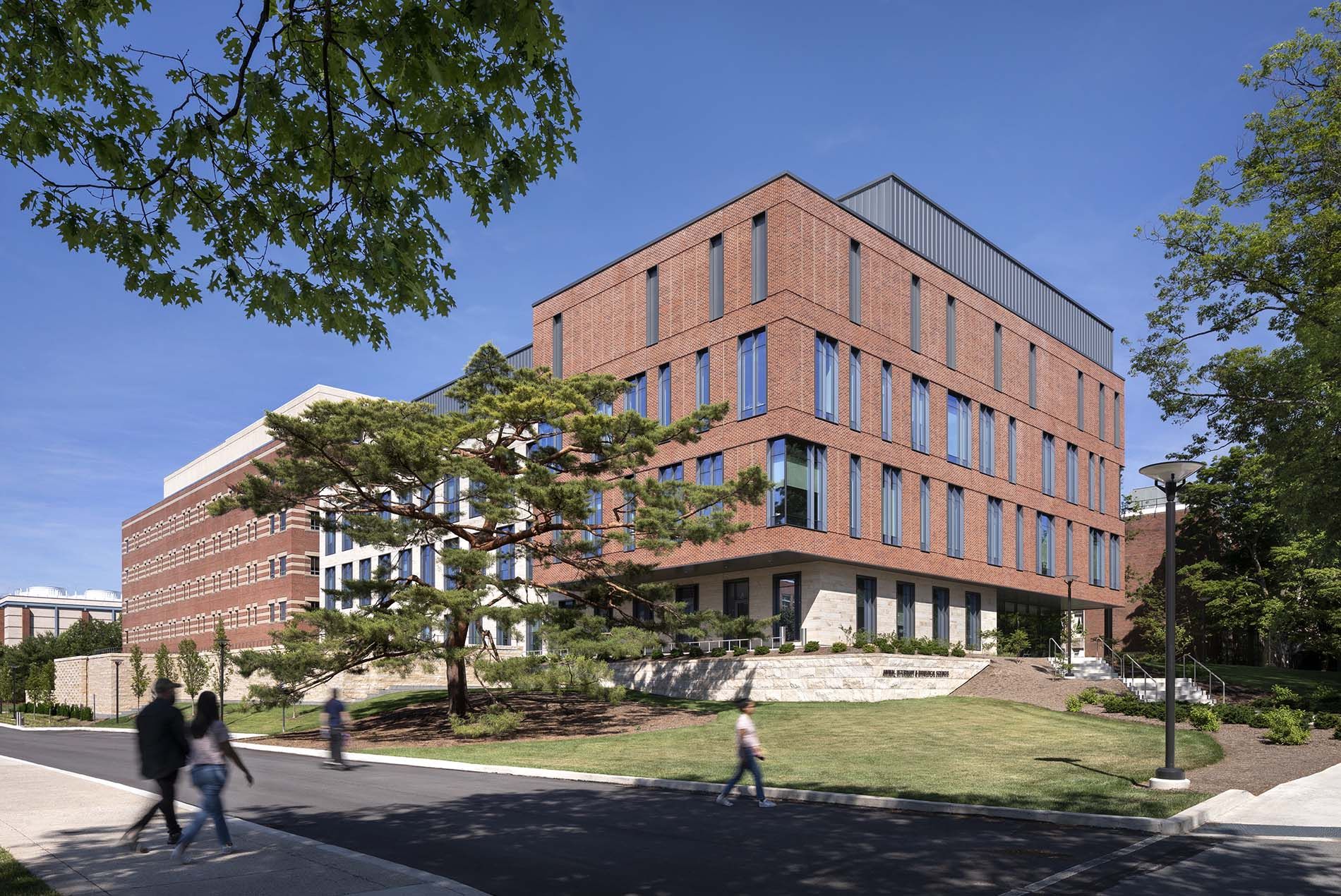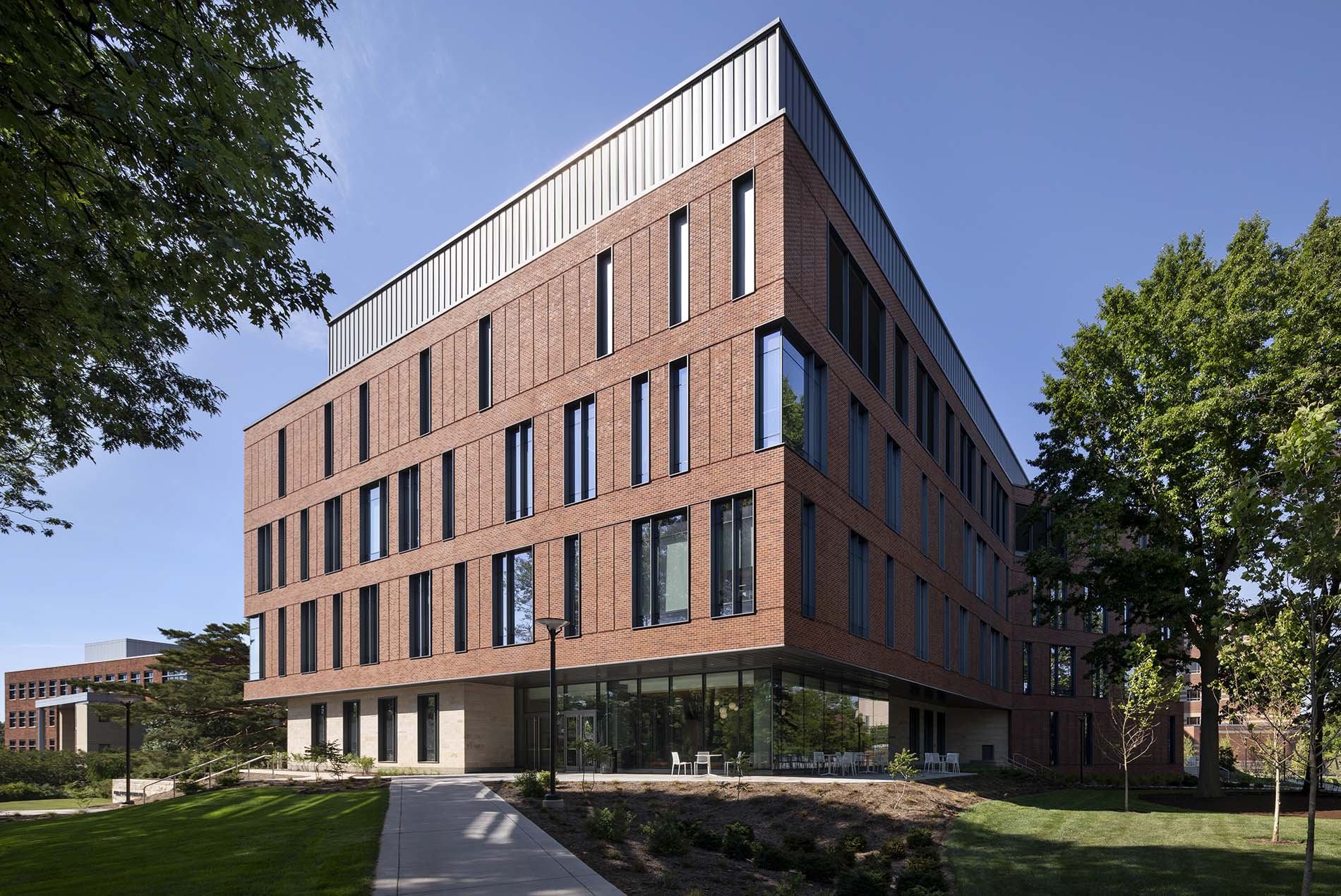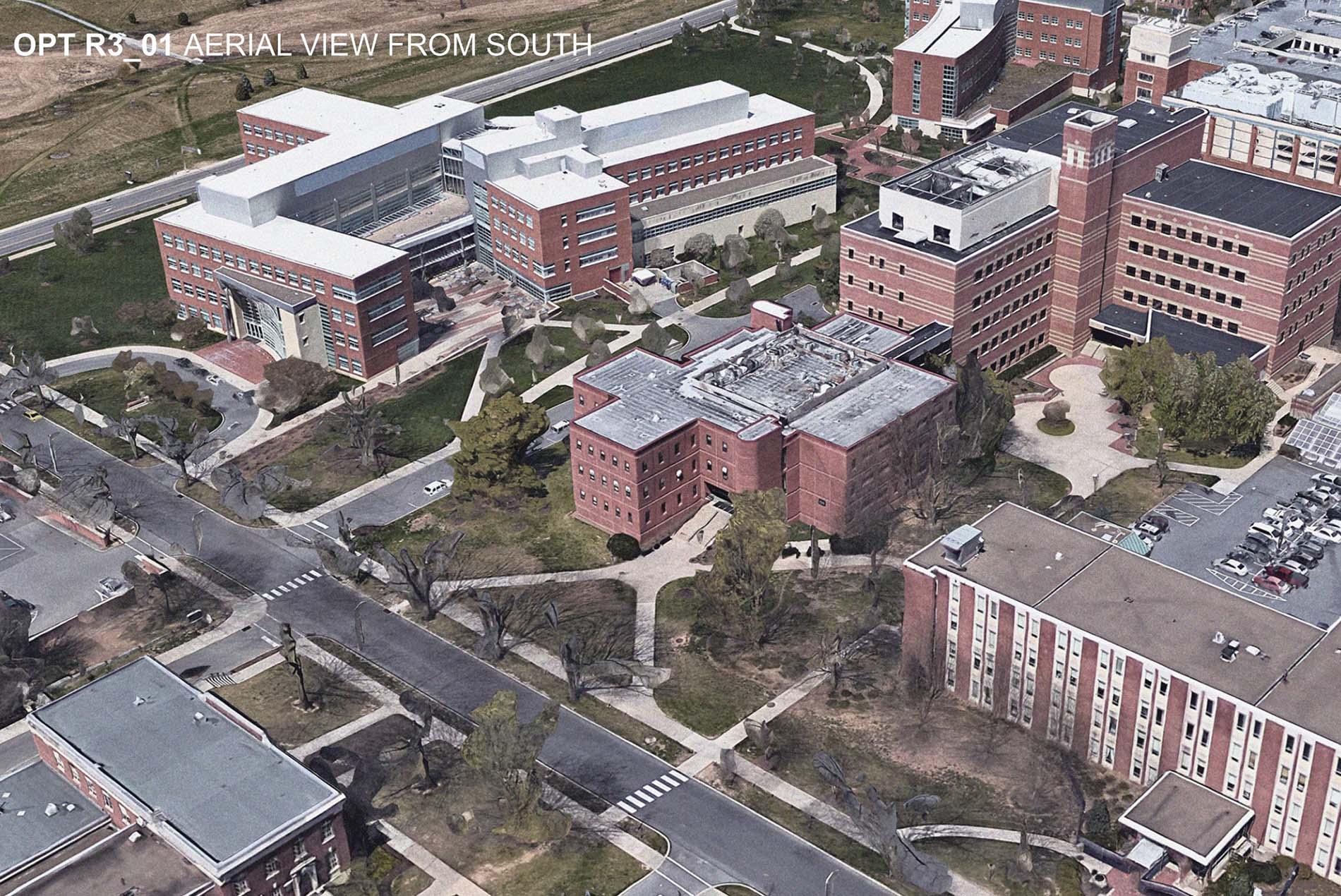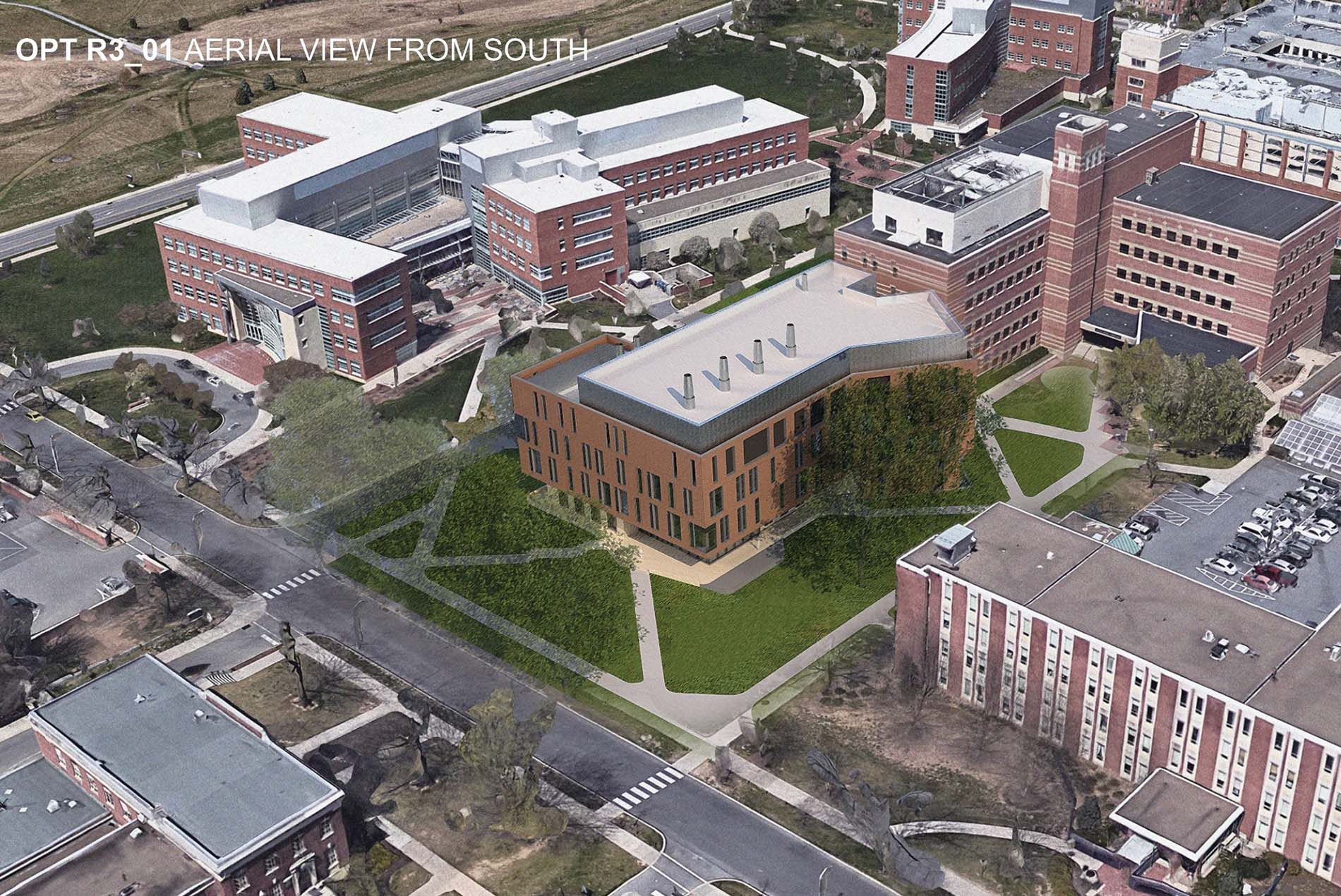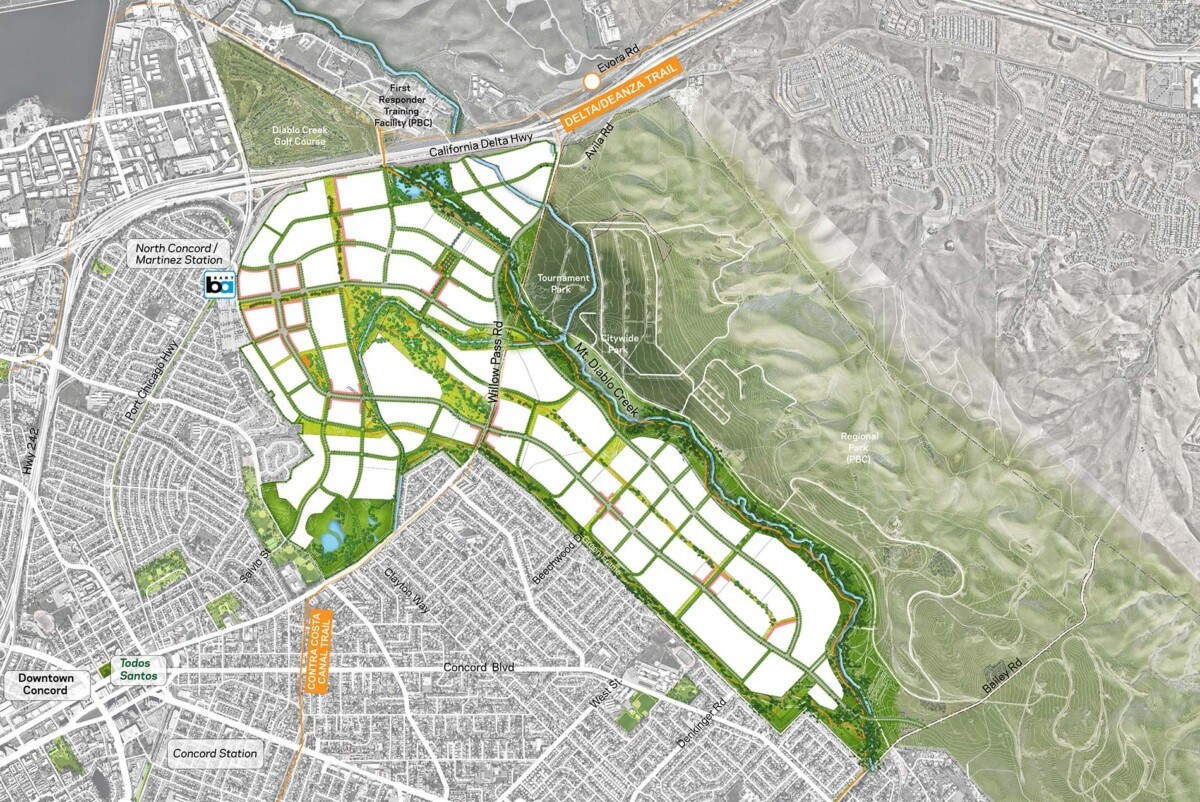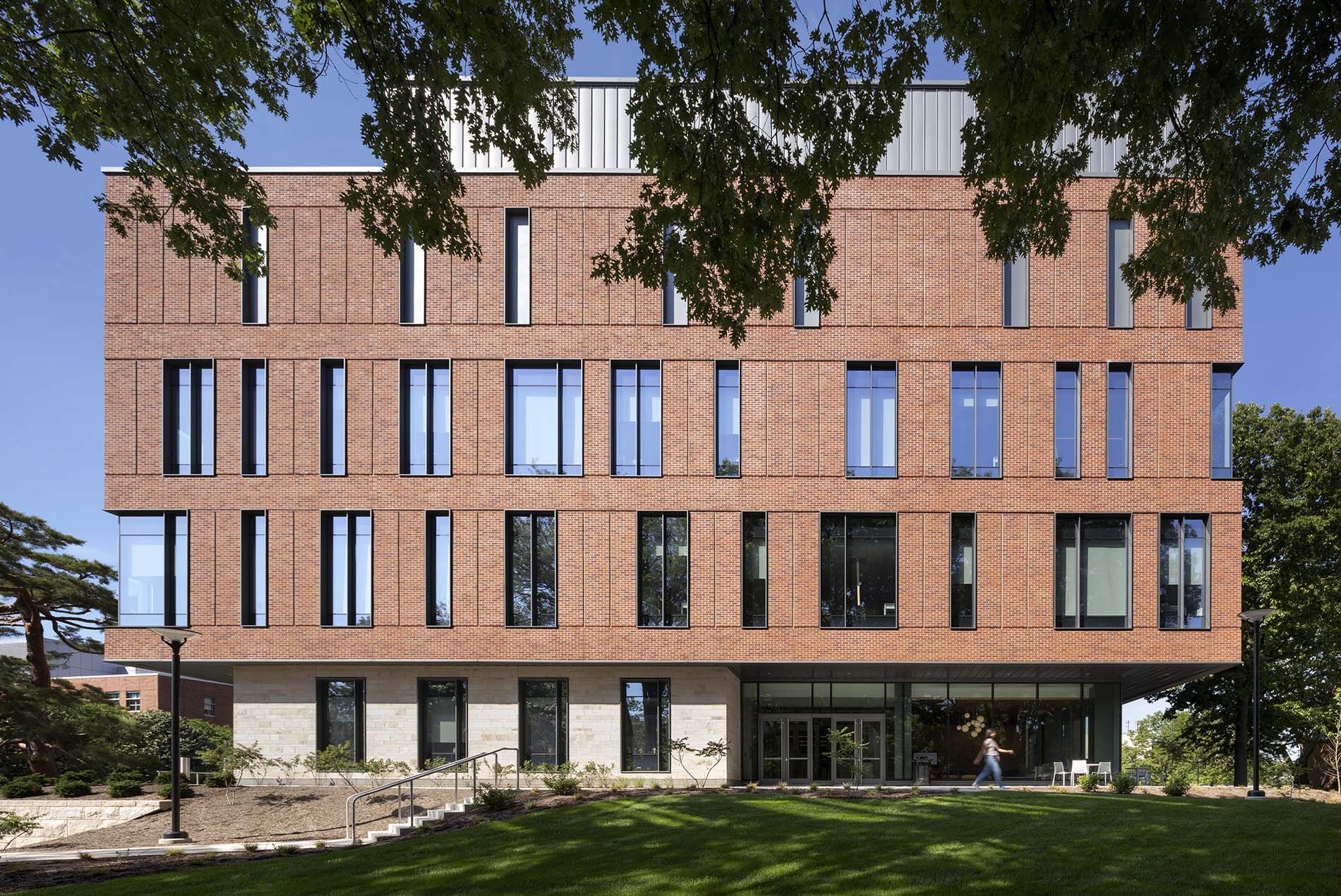
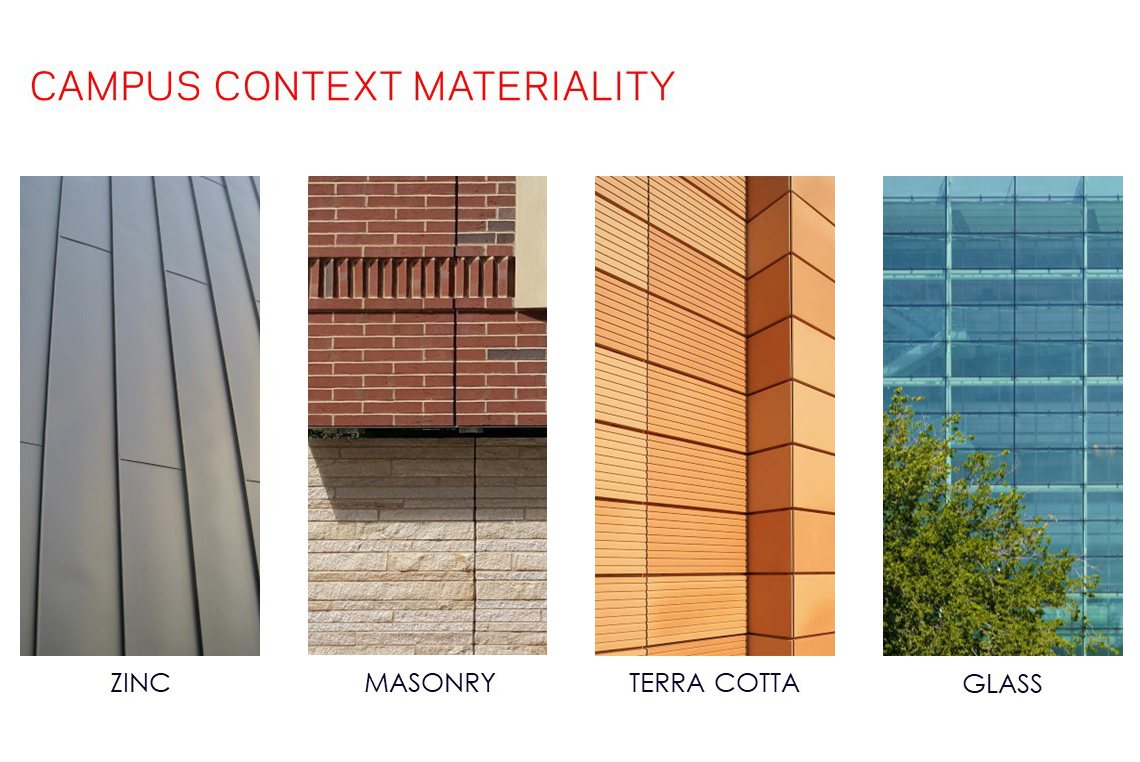
To guide the design of the AVBS, HOK engaged a wide range of Penn State community stakeholders. The team led visioning sessions and interactive workshops with campus leaders, facilities personnel, scientific researchers, and architecture students and interns.
Through close collaboration with these stakeholders, HOK’s team developed an understanding of the relationships between different areas and their needs for collaboration and shared resources.
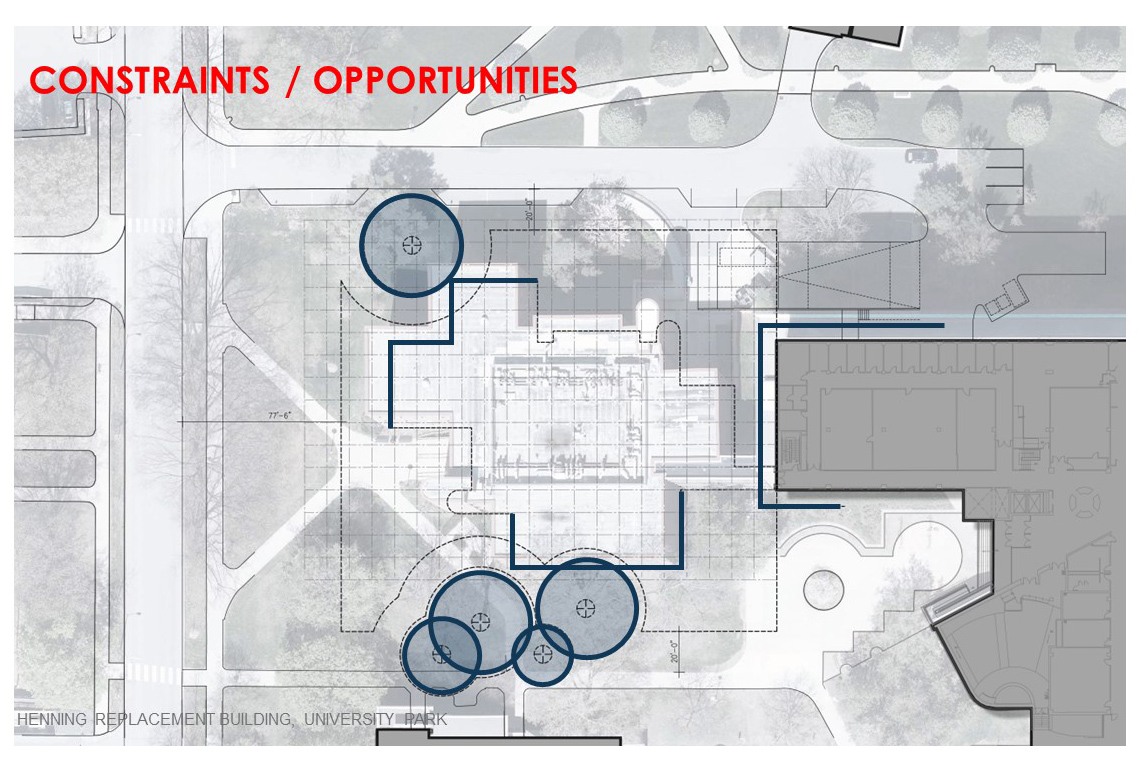
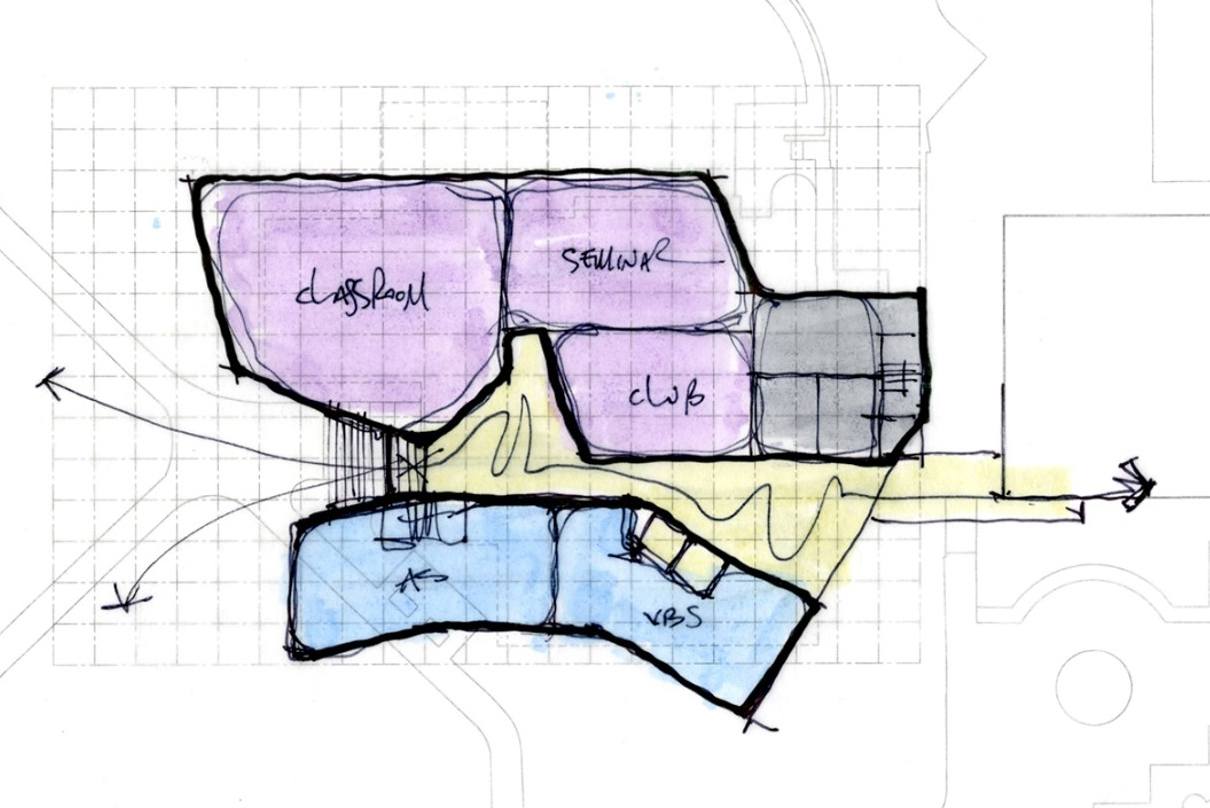

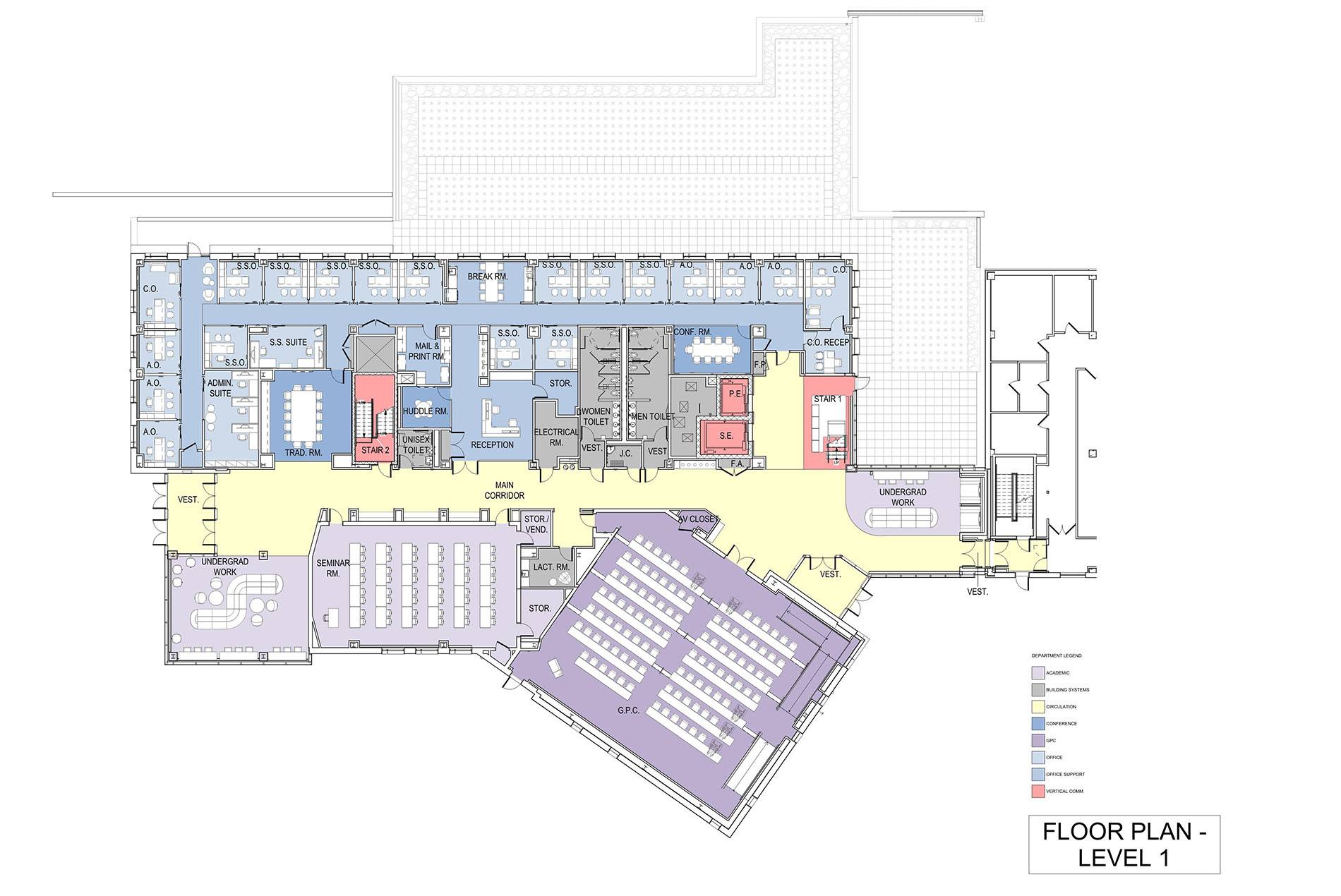
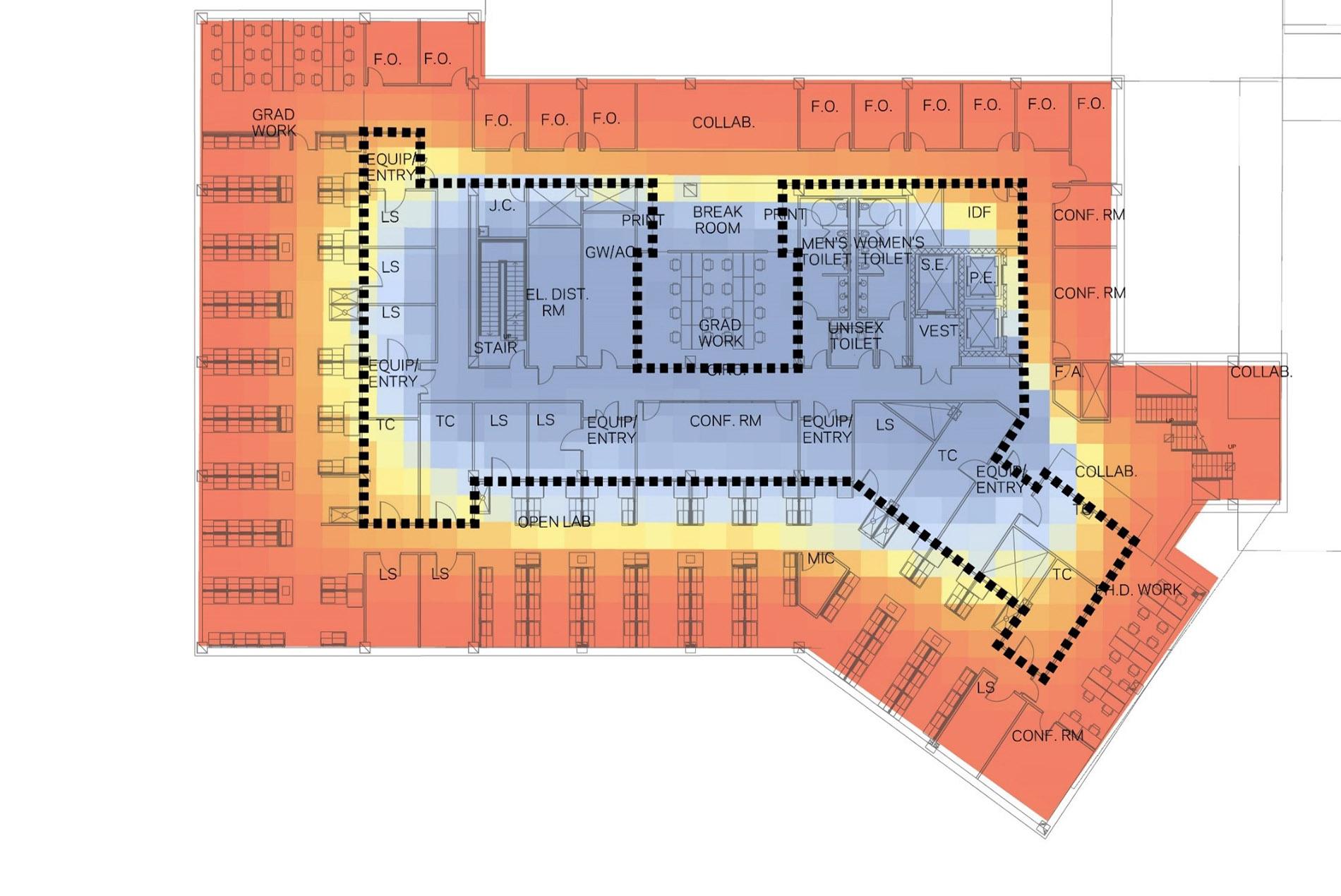
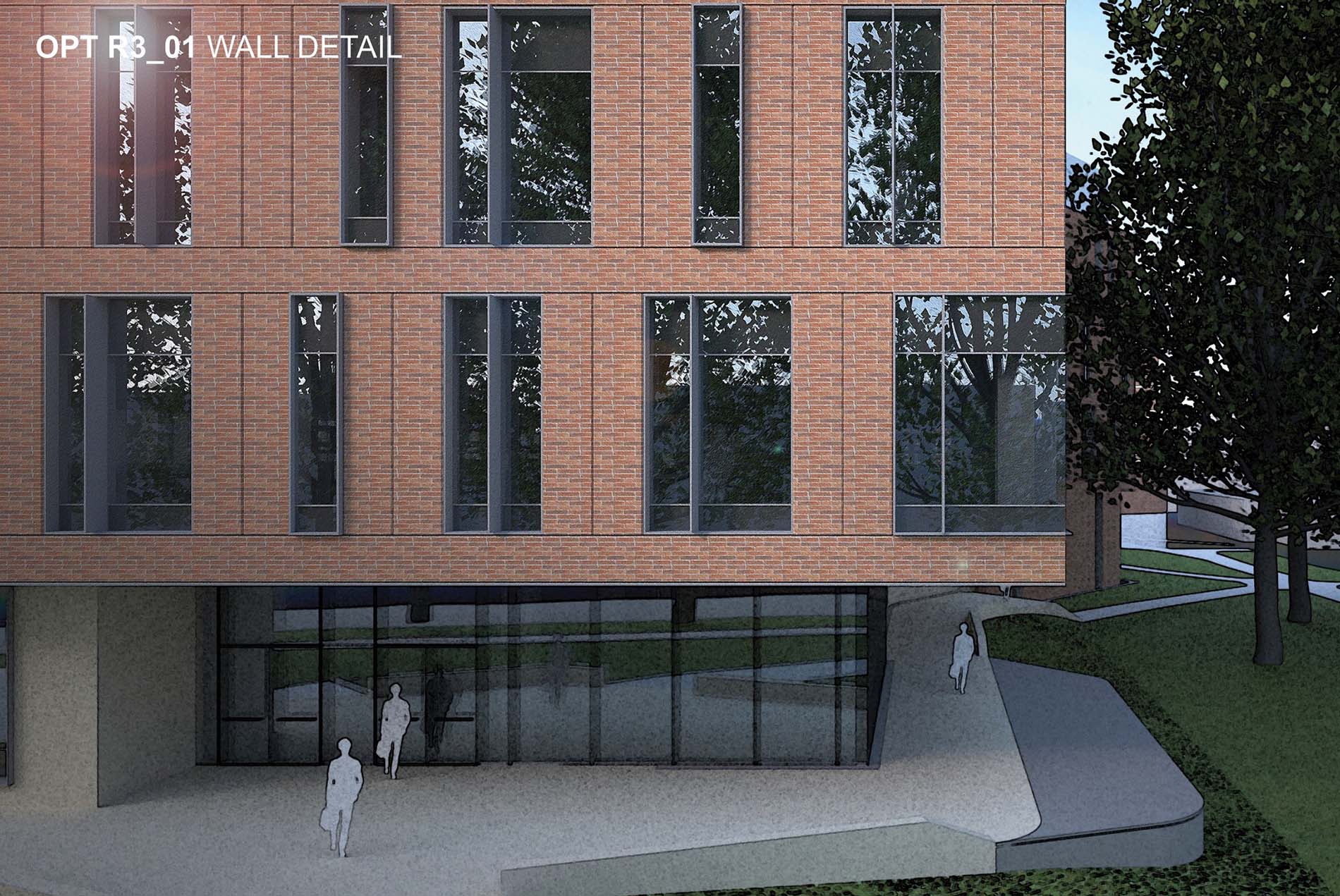
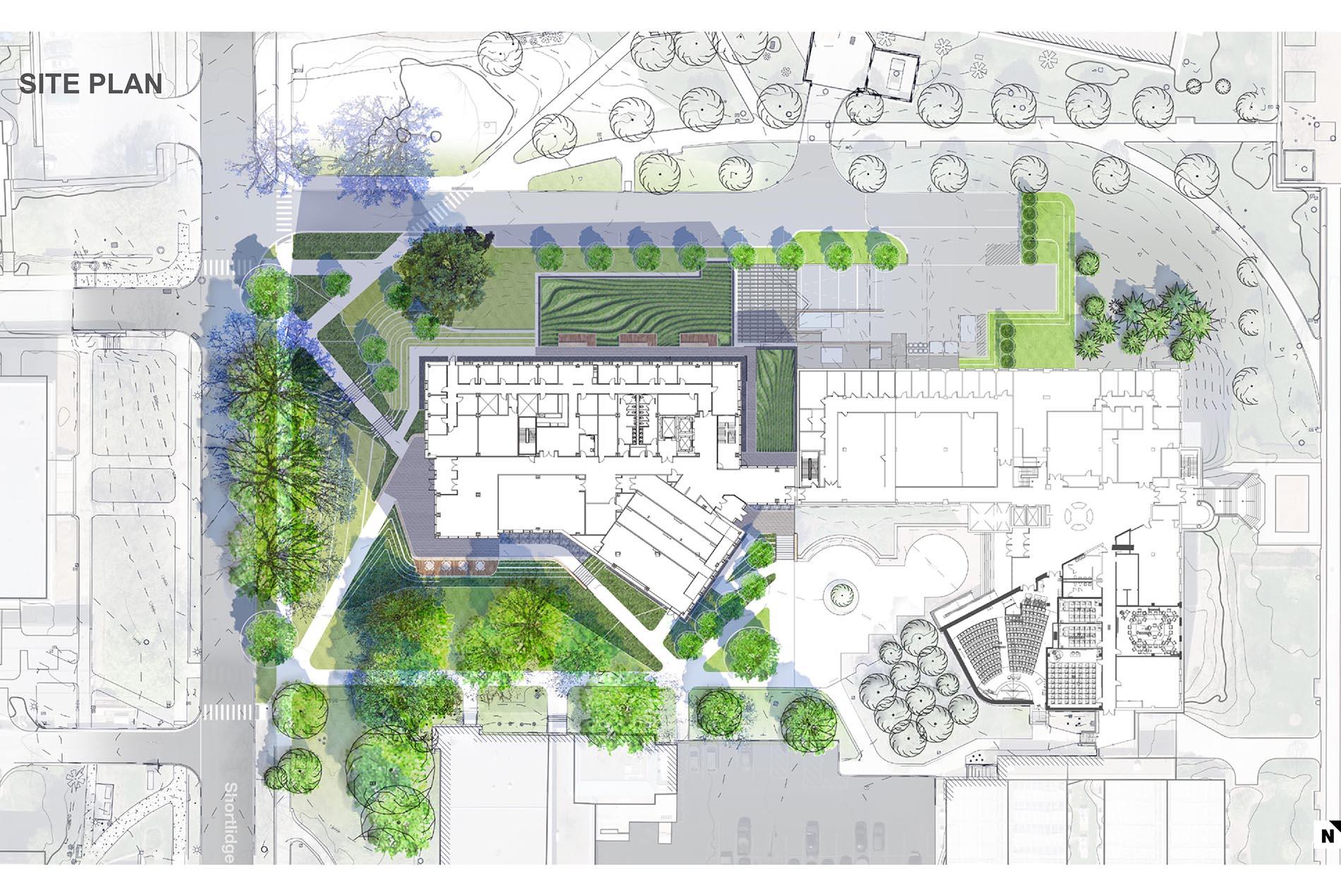
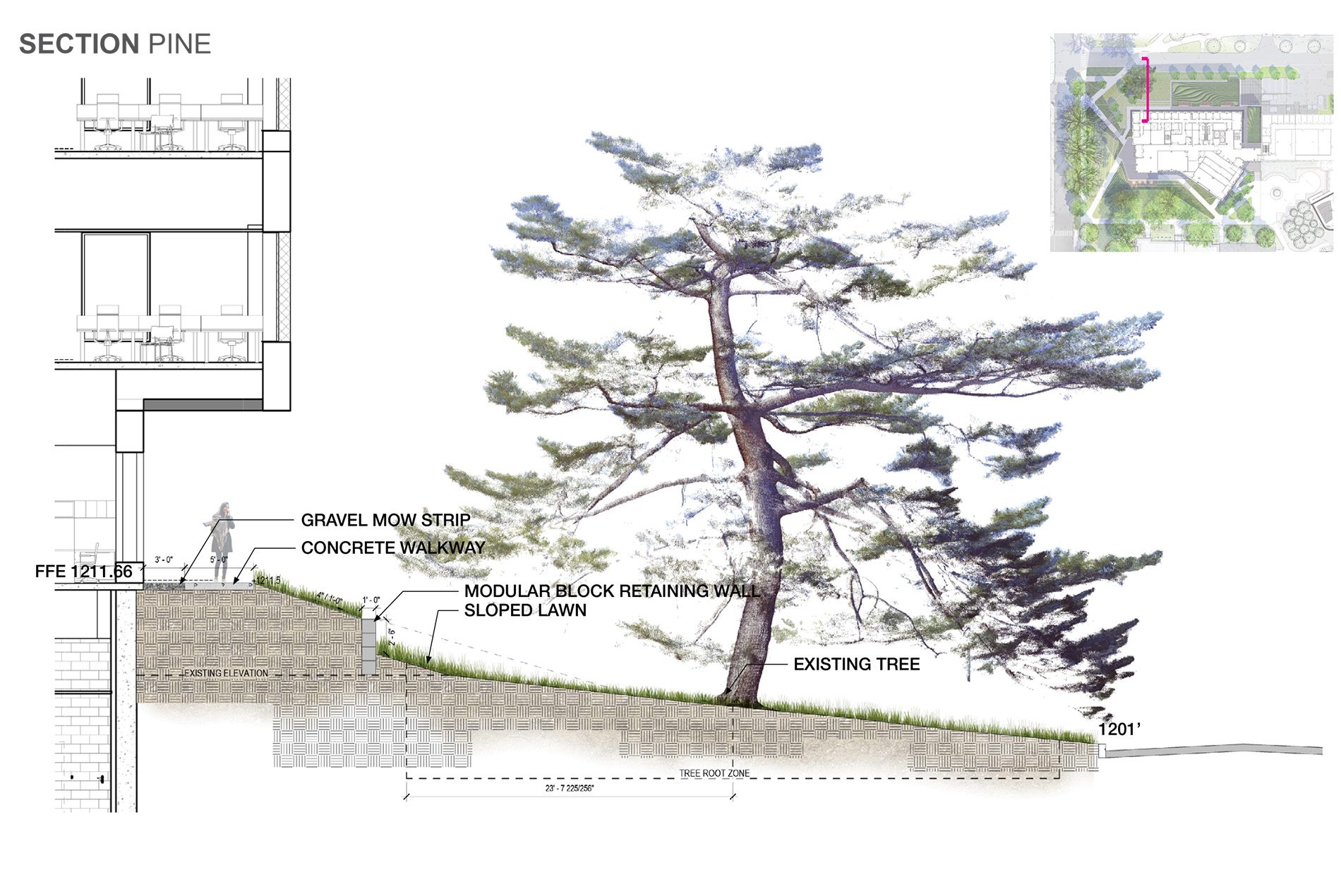
The team collaborated with Penn State stakeholders to preserve the site’s mature trees and unique landscape features. The University, known for its picturesque campus, emphasized the importance of protecting these natural assets. Including the campus landscape architect and a tree conservation specialist in the design process helped build trust and support from the Penn State community.
One important outcome was adjusting the building’s footprint to save a rare heritage Japanese Red Pine, which became a focal point framed by the main entry. The team designed the foundation around the root zones of that tree and other key specimens, configuring the interior to work harmoniously with the existing landscape.
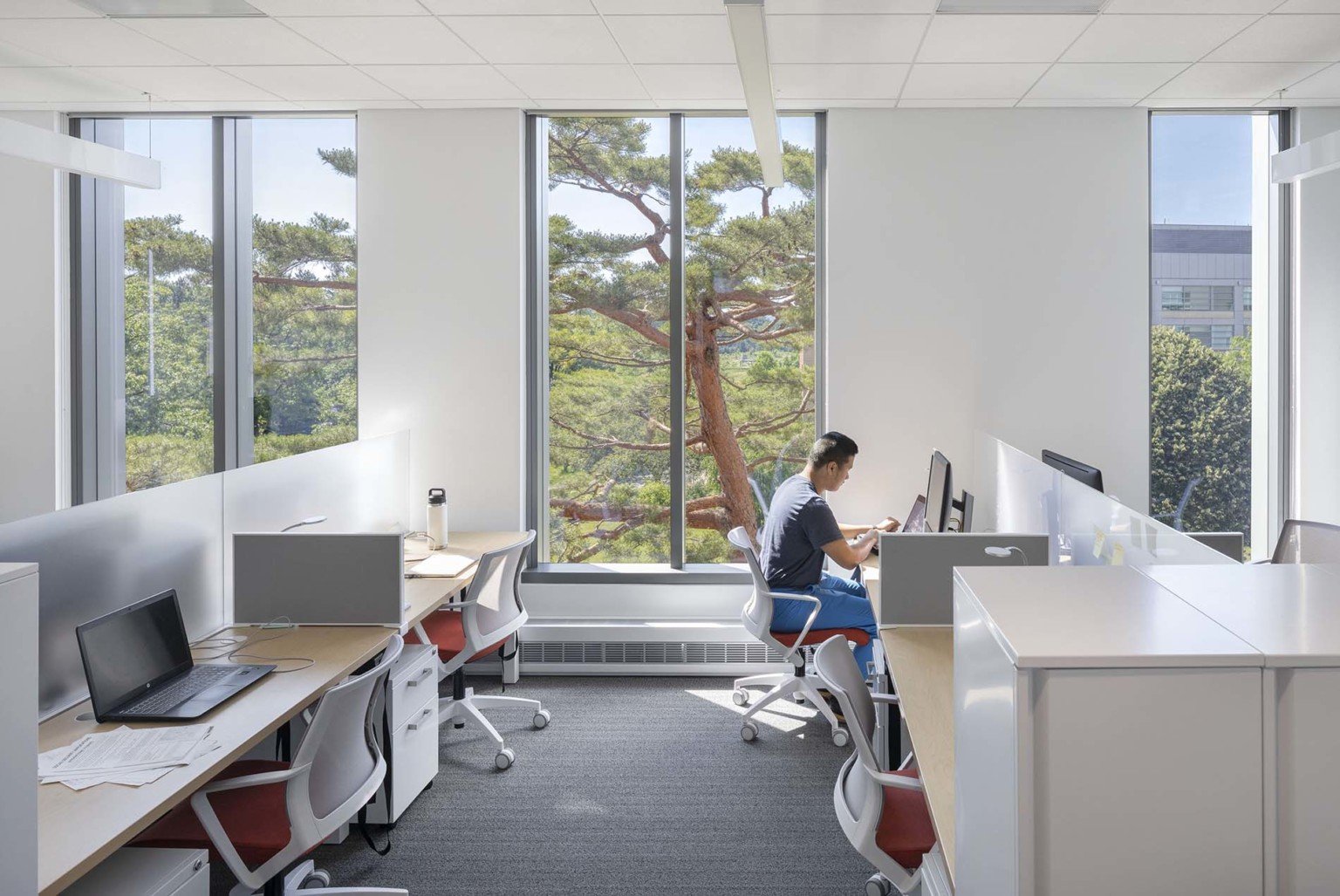
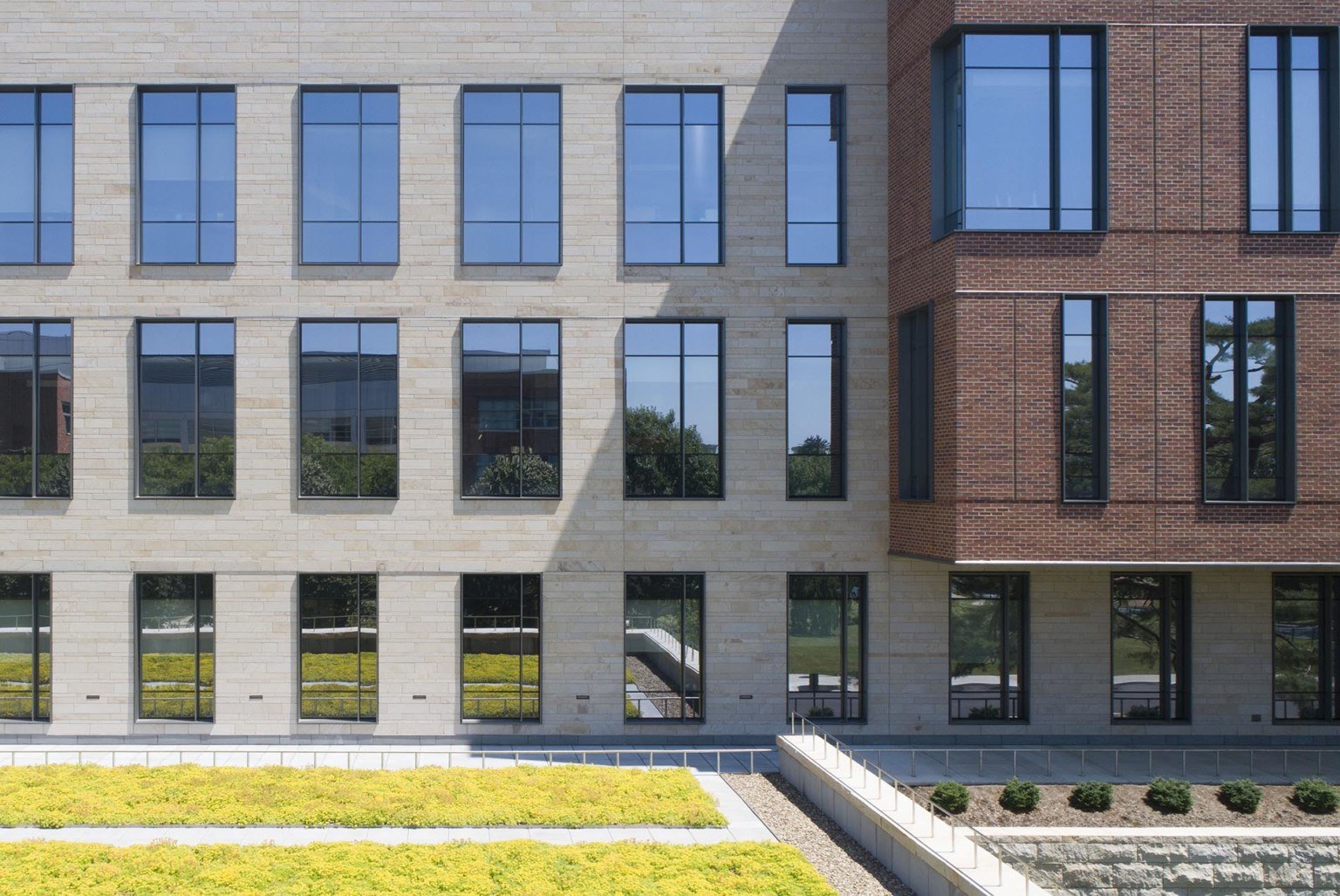
The design team drew inspiration from Penn State’s established architectural style to integrate the building into the campus. The exterior combines traditional brick masonry, generous glazing and locally quarried, bush-hammered sandstone. This mix creates a warm, inviting facade. The nuanced patterning of the custom brick contrasts with the building’s large scale, lending a sense of sophisticated liveliness.
At the ground level, a light stacked stone visually anchors the building, contrasting with the brick above and connecting to the earth. This enhances the building’s harmony with its natural surroundings.
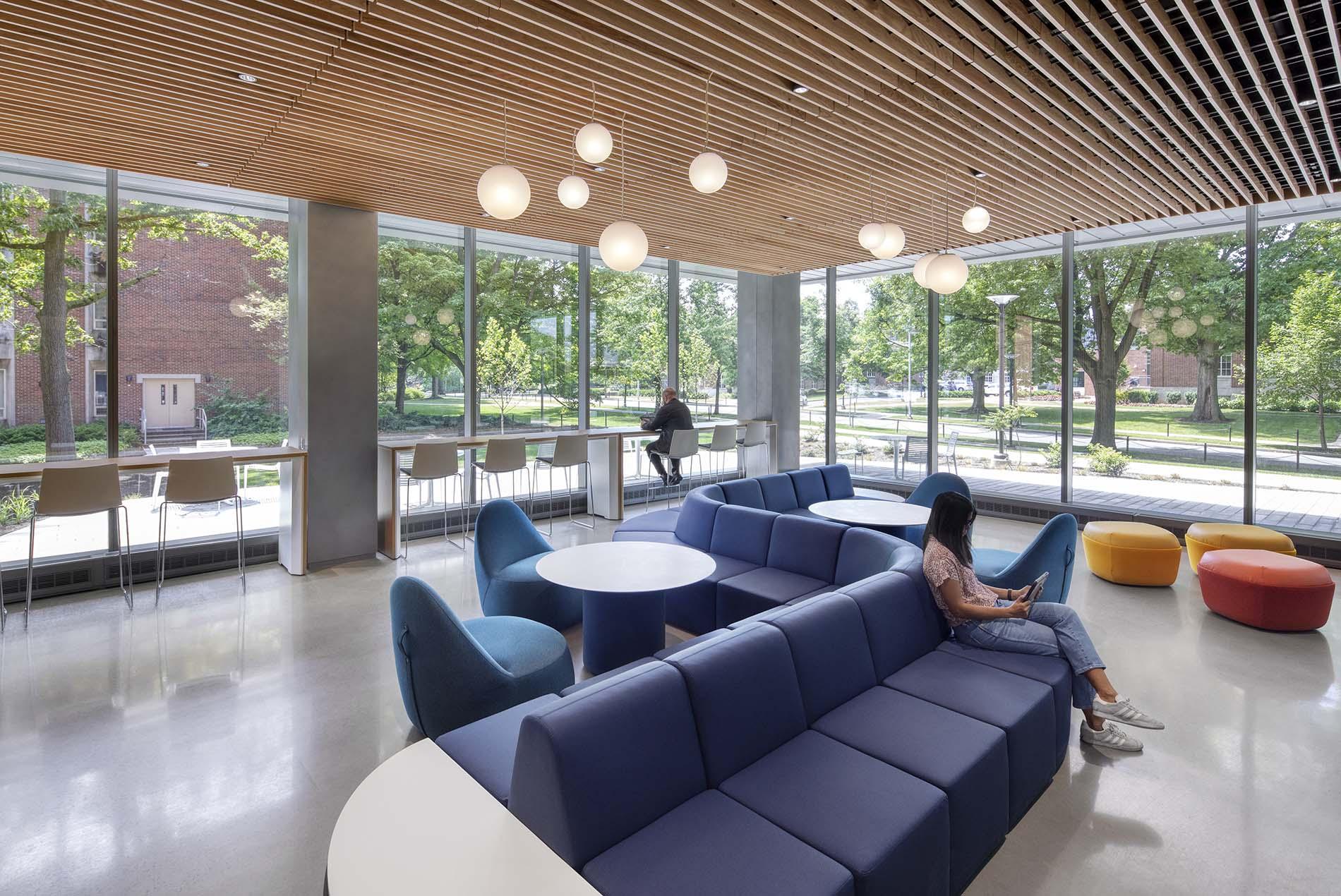
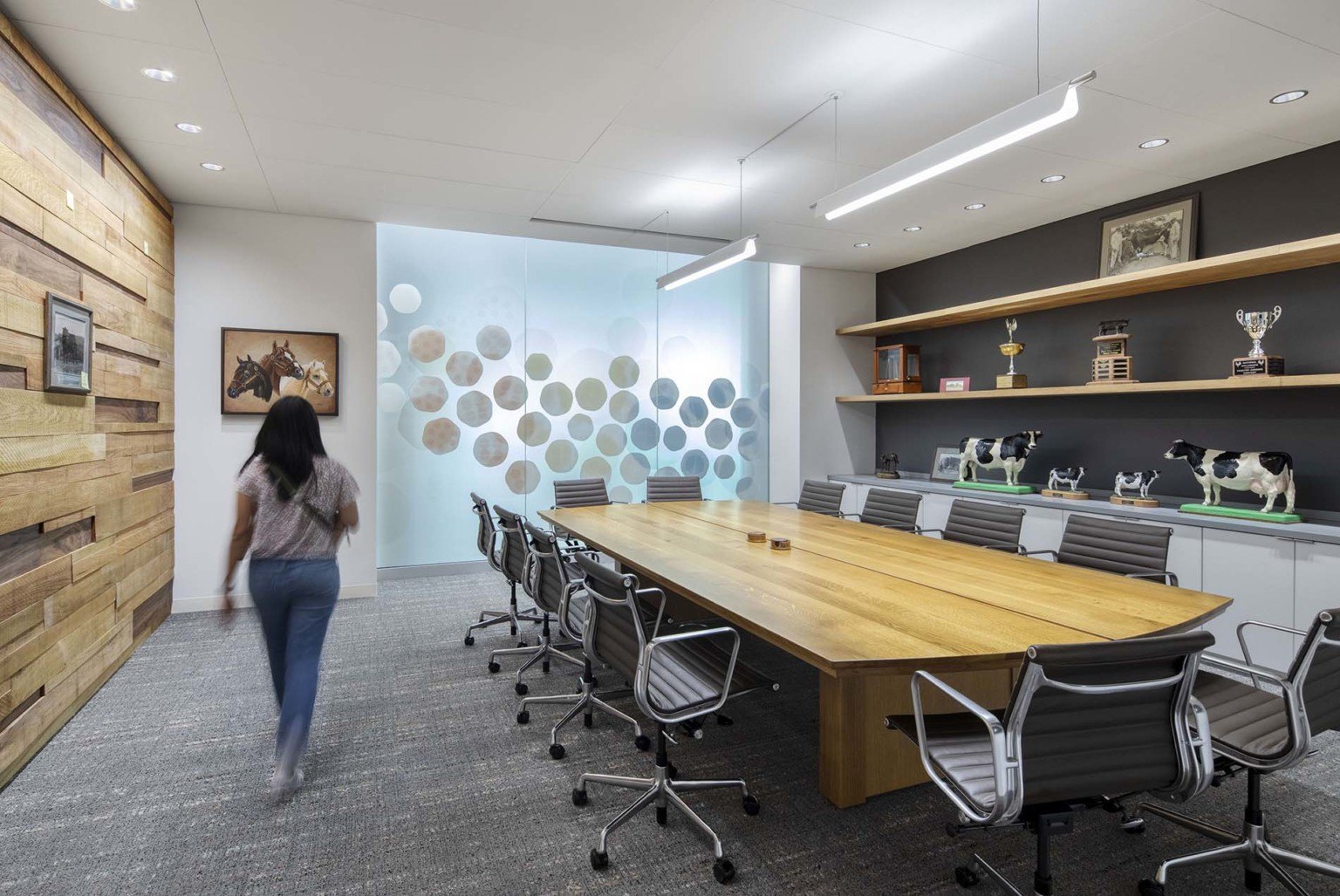
From the beginning of the project, there was a strong desire to bring people together to improve interaction and resource sharing between previously siloed departments. The AVBS features collaboration zones and flexible “neighborhoods” that encourage researchers from different fields to connect, despite having dedicated labs and offices on separate floors. These spaces facilitate cross-departmental partnerships and provide flexibility for future changes in lab spaces.
Common areas like the inviting first-floor lecture hall, lobby lounge and modern conference room encourage spontaneous interaction among Penn State students, faculty and researchers. Various meeting areas serve as “sticky spaces” where people from different backgrounds can connect in a more informal, collaborative atmosphere. These include a cozy study lounge and open conference areas in the lobby. These spaces are ideal for both collaborative projects and private work.
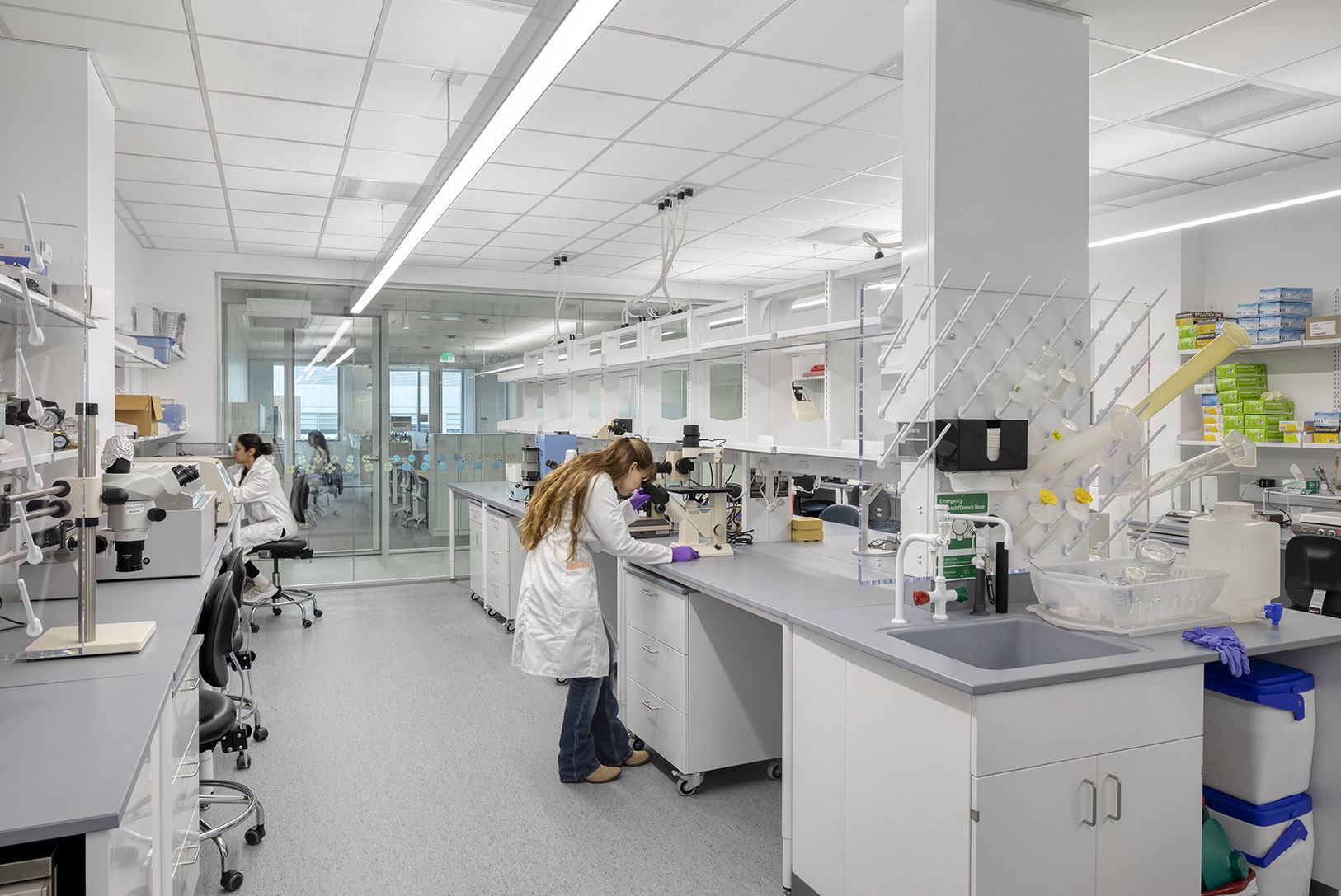
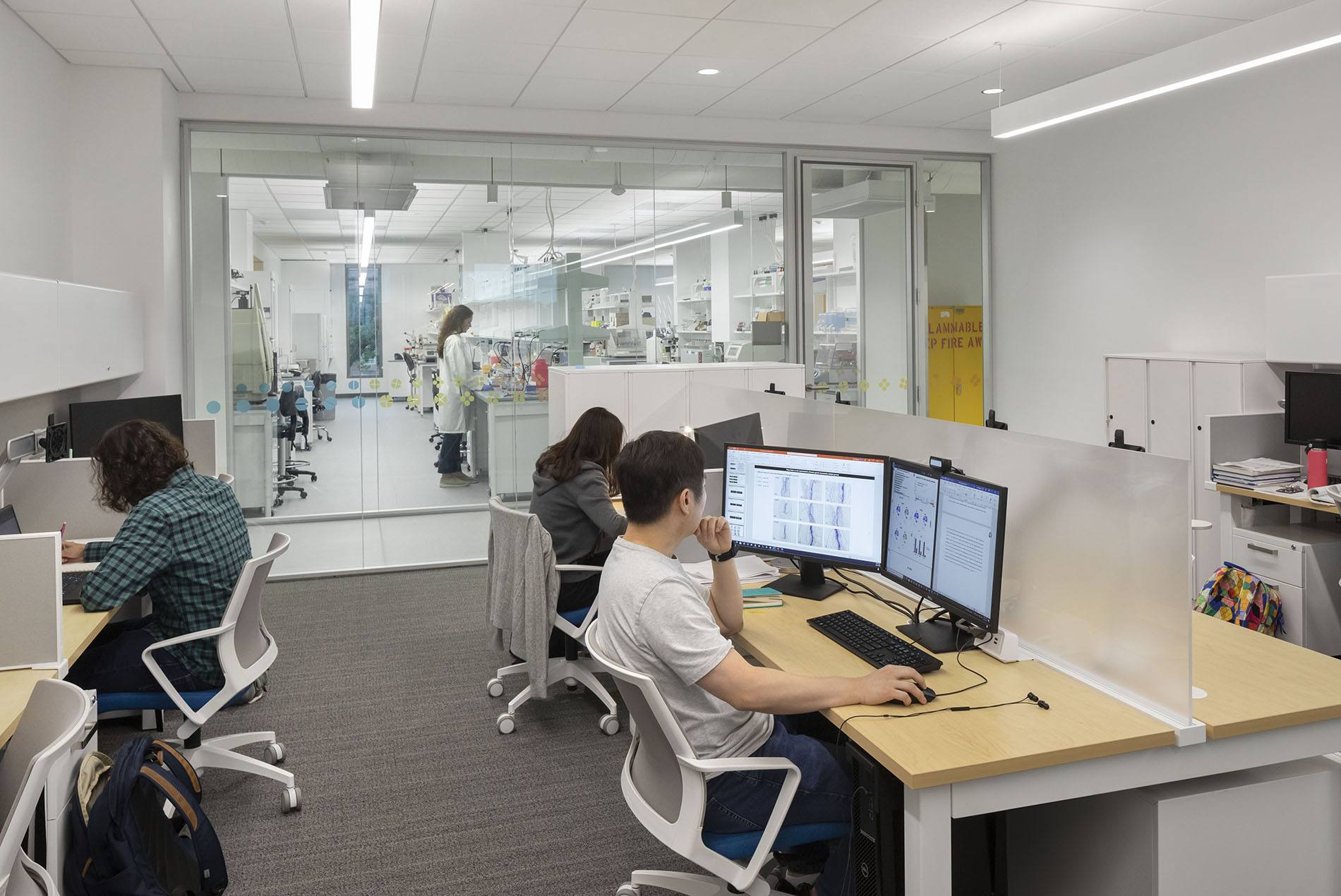
Open lab environments have dedicated and shared support facilities. The strategic placement of labs adjacent to related program spaces optimizes workflows and encourages resource sharing. Desk spaces are purposefully located outside the lab zones and interspersed with conference rooms and informal collaboration areas. This layout promotes easy communication between research teams.
Positioning the labs along the exterior walls allows occupants to maintain a visual connection with nature and benefit from natural light, which was a priority in the design.
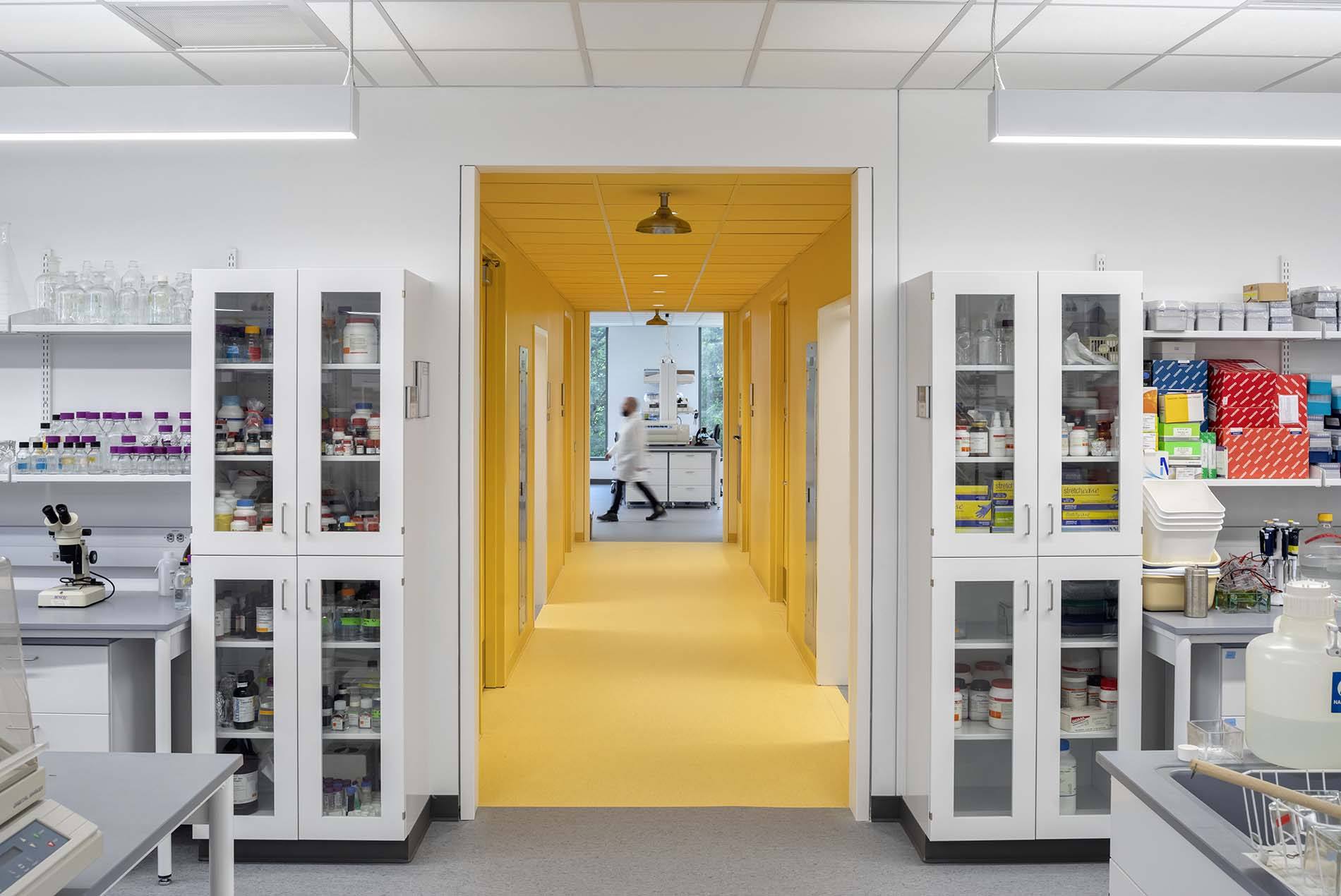
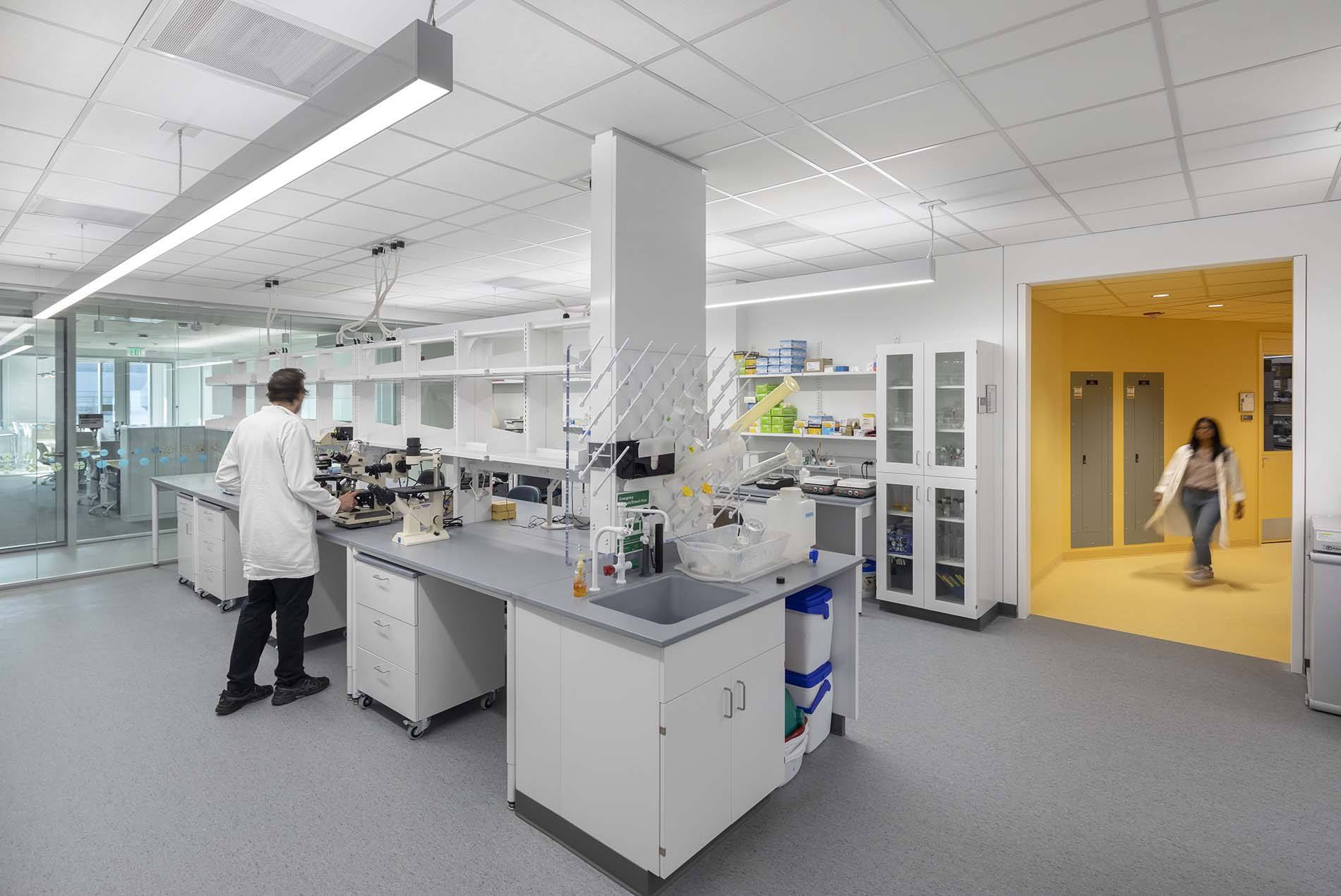
The design carries transparency throughout the building. Glass-enclosed corridors provide glimpses between office areas, lounge zones and the lab neighborhoods. This approach puts science on display, supporting Penn State’s pedagogical mission and creating a sense of openness and collaboration within research spaces.
The open lab neighborhoods and transparent design elements represent a significant departure from the Henning Building’s dated, fully enclosed layouts.
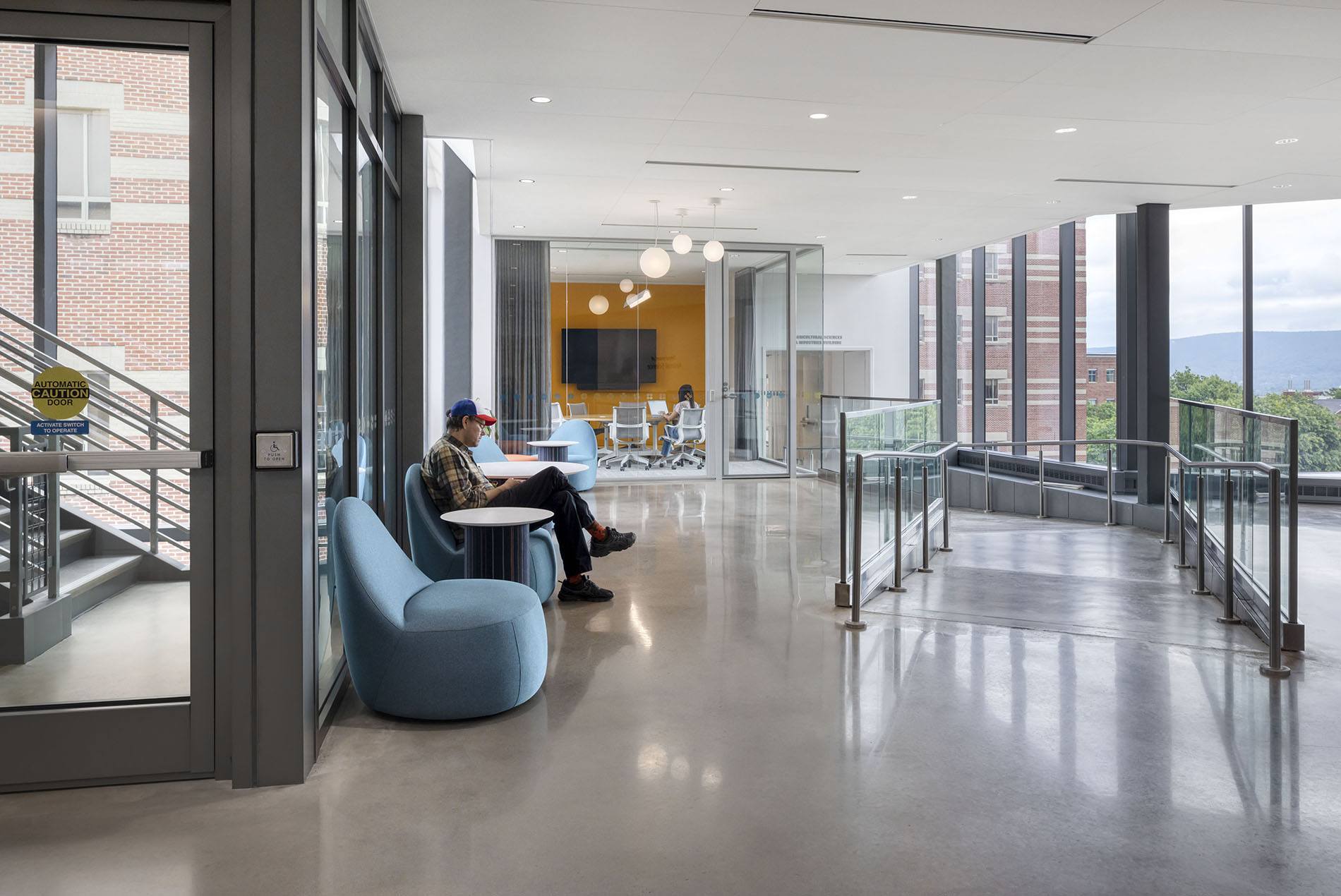
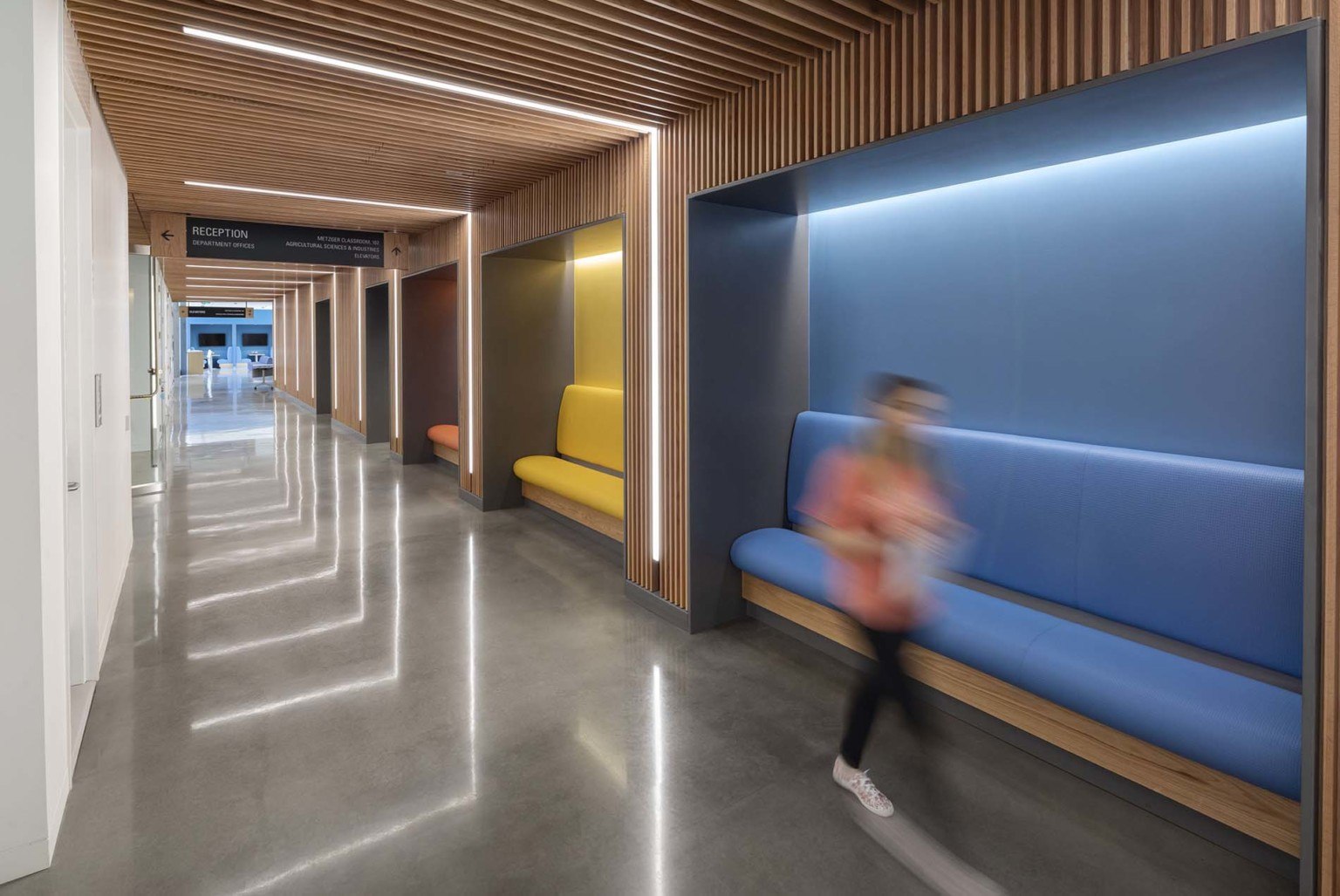
A glass-enclosed pedestrian bridge spans the first, second and third floors, directly linking the new AVBS to the Agricultural Sciences and Industries Building across the street. This physical connection is essential, as some of the departments’ research and administrative functions remain in the existing building.
HOK’s design transformed what had been a utilitarian link into an inviting interior walkway, brought to life by lounge areas and informal gathering spaces. By extending opportunities for collaboration beyond the new building’s footprint, this reimagined space fosters a sense of community and encourages interdisciplinary interactions.
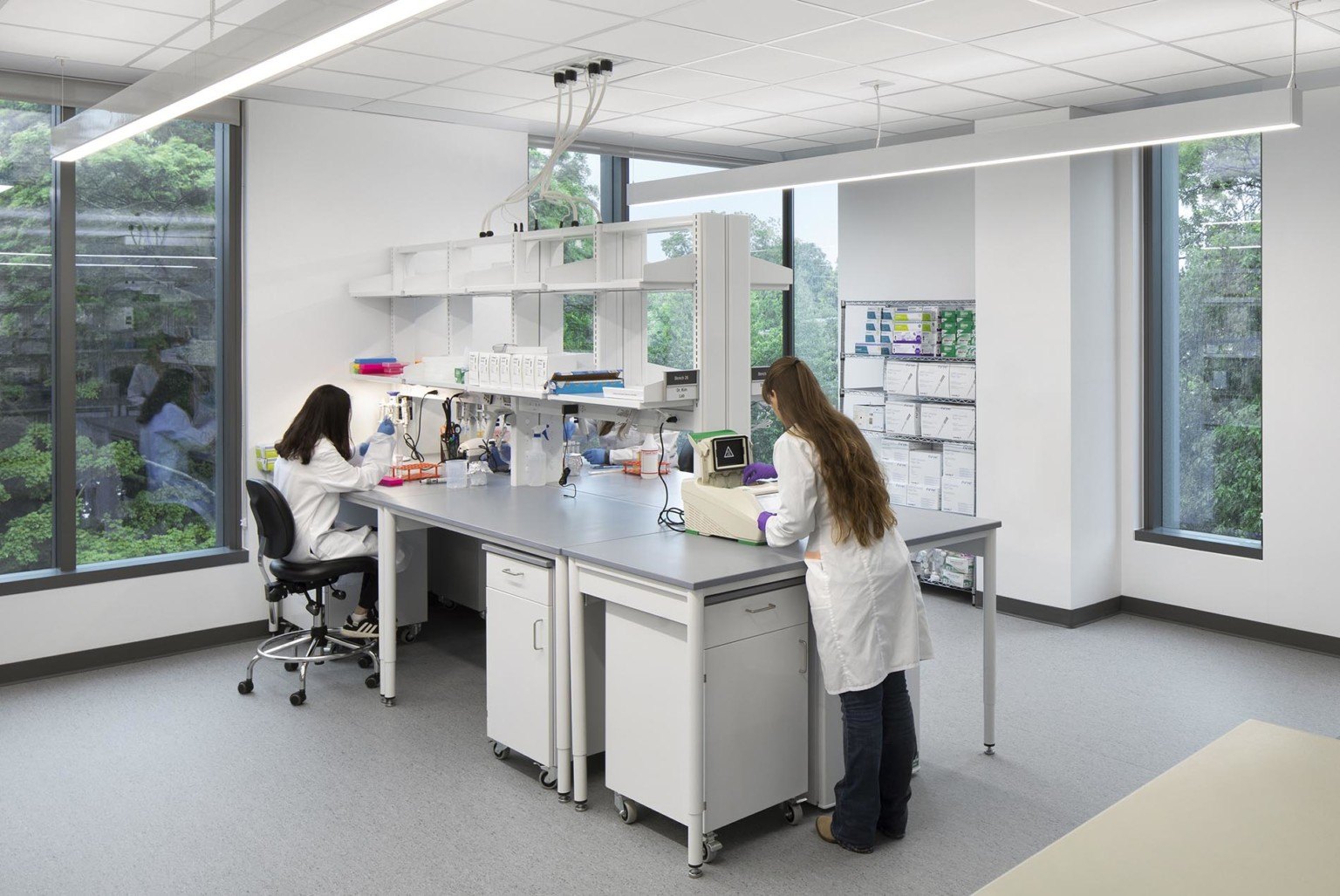
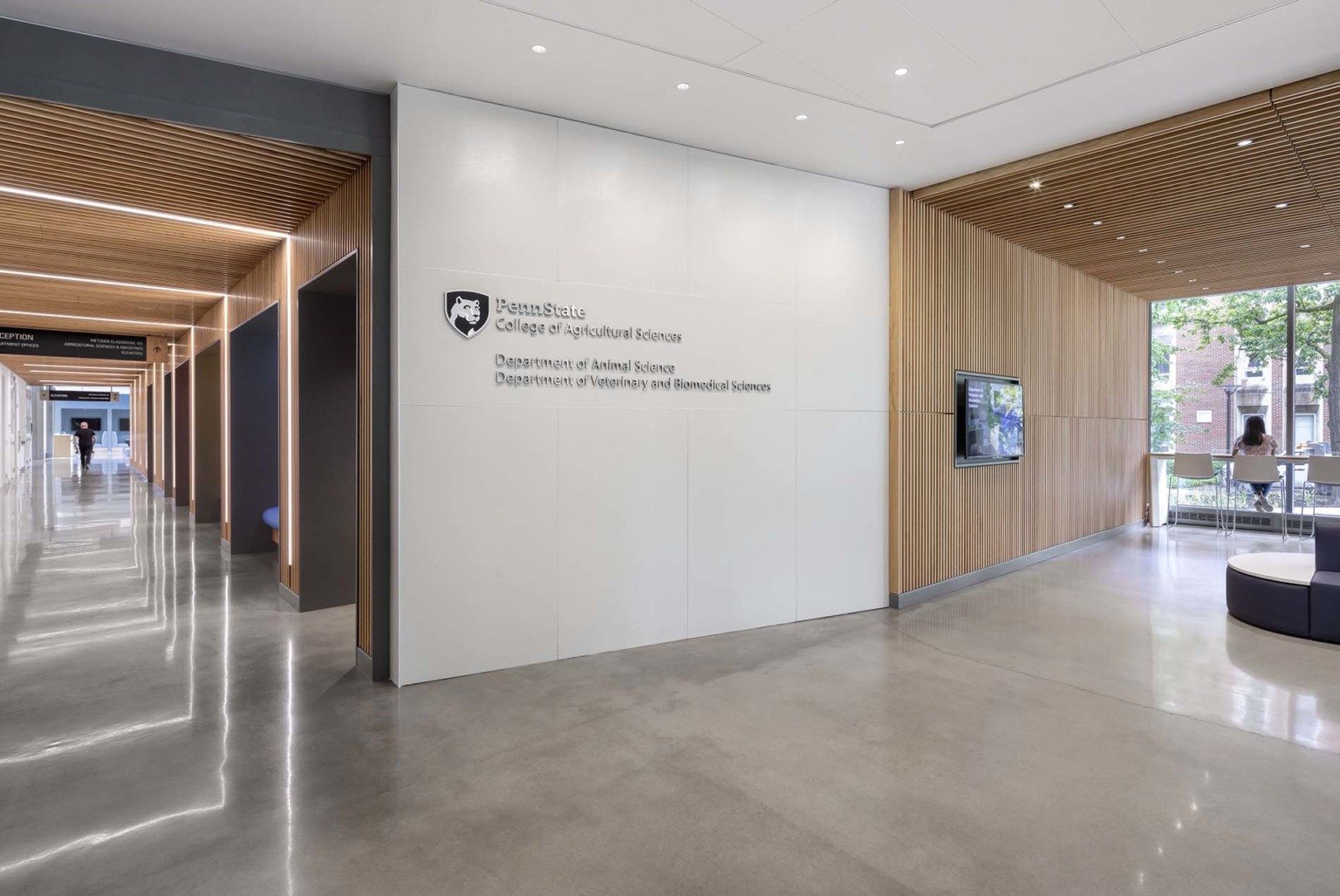
Recognizing that access to daylight and views of the outdoors significantly impact occupants’ well-being, the design team focused on health and wellness. This emphasis promotes better sleep, improved circadian rhythms and enhanced psychological well-being.
The team incorporated biophilic design principles, using natural materials, colors, patterns and textures that reference nature. Wood harvested from previous campus trees was used in feature spaces. This reinforces an agrarian aesthetic that aligns with the building’s research focus.
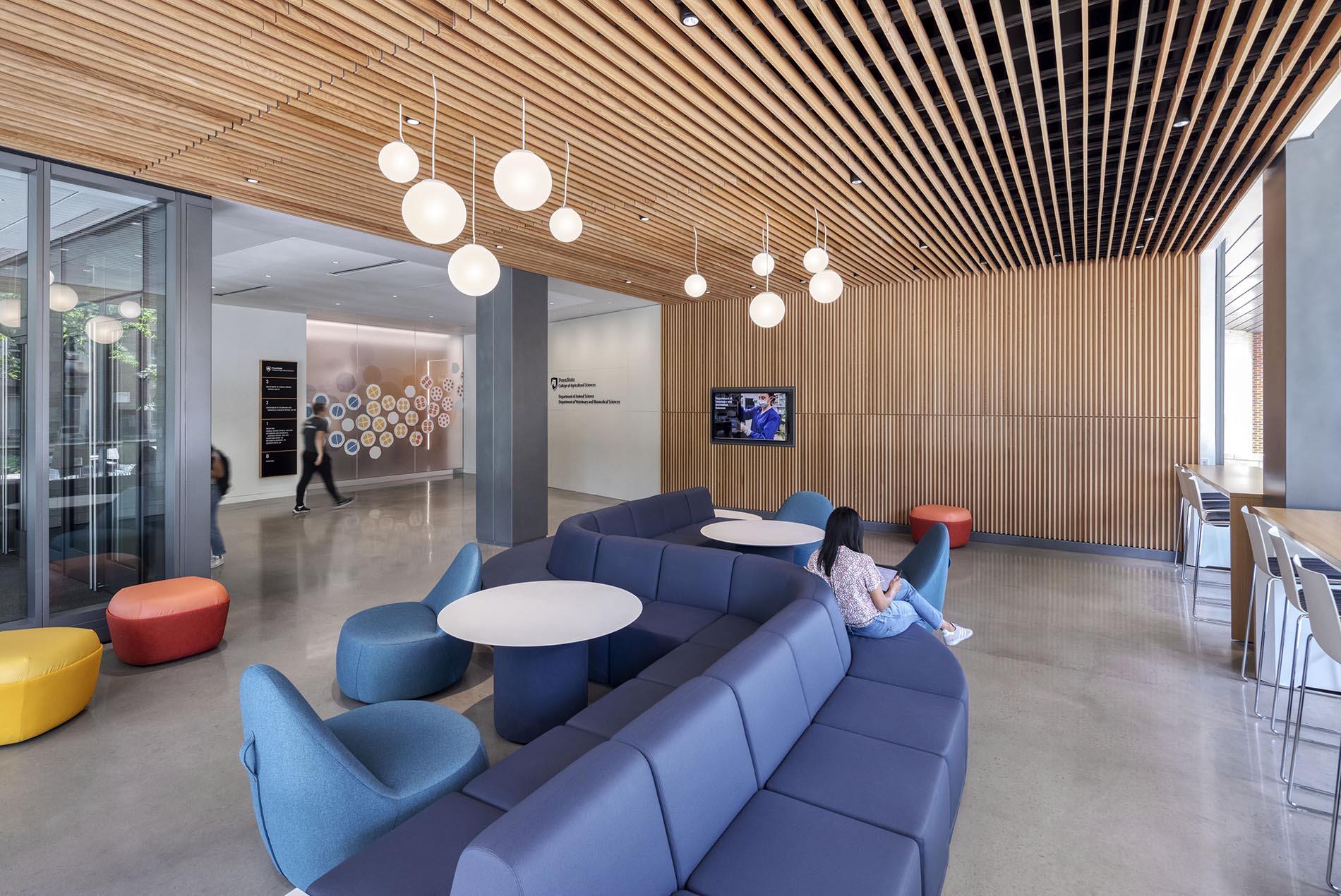
The team focused on human health impacts when selecting interior finishes and furnishings. This included referencing Environmental Product Disclosures and minimizing volatile organic compounds, particulates, formaldehyde and other pollutants. The use of low-emitting materials improves indoor air quality.
These healthy material strategies support with the building’s mission of improving public health through agricultural and biomedical research.
